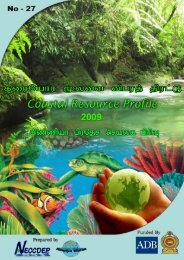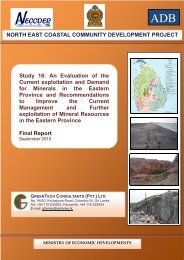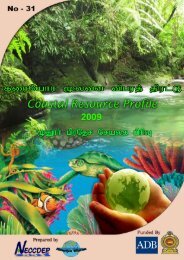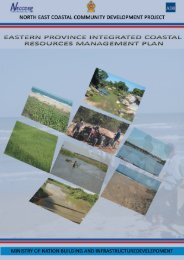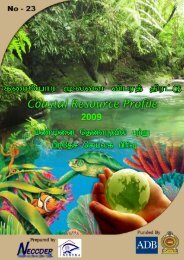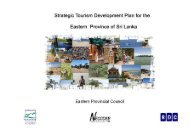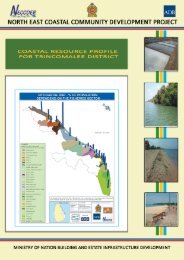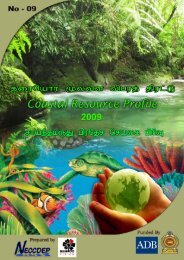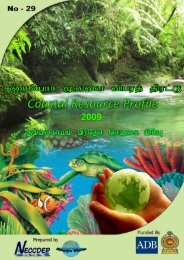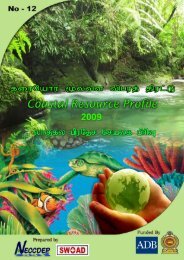Untitled - Neccdep.com
Untitled - Neccdep.com
Untitled - Neccdep.com
You also want an ePaper? Increase the reach of your titles
YUMPU automatically turns print PDFs into web optimized ePapers that Google loves.
TRINCOMALEE BAY SPECIAL MANAGEMENT AREA Page | 20<br />
IV.<br />
ENVIRONMENTAL PROFILE OF TRINCOMALEE BAY<br />
A. Introduction<br />
85. Developing an environmental profile of an area to be considered for SAM planning is<br />
an essential part of the SAM planning process. The profile should support the consultation<br />
process and be strengthened by the consultation process. The profile should be<strong>com</strong>e more<br />
<strong>com</strong>prehensive and focused as the SAM planning proceeds<br />
86. Trin<strong>com</strong>alee bay is a large bay ecosystem rather than a single water body and consist<br />
of large core water body of Koddiyar bay (Cod bay) that is contiguous with smaller bays,<br />
Inner harbour bay with China bay, Thampalagamam bay, Shell bay and Dutch bay as<br />
illustrated in Figure IV.1. The depth of the bay varies from shallow water to very deep water<br />
within the bay system.<br />
Figure IV.1: Aerial view of Trin<strong>com</strong>alee bay (source: Google earth, 2009)<br />
Inner harbour<br />
bay<br />
Thampalagamam bay<br />
Koddiyar bay<br />
87. A 1-2 km stretch from the shore seawards at the southern and eastern sections of the<br />
bay is generally shallow with 10-12 m depth. The sea bed then deepens sharply to depths of<br />
400-800 m in the core area of the bay. The bay mouth towards the northern harbour area is<br />
about 55-68 m deep. Due to the depth, these areas are not suitable for the growth of coastal<br />
vegetation such as mangrove and associates. However, the western section of<br />
Thampalagamam bay is generally shallow (1-2 m in depth) and provides suitable habitat



